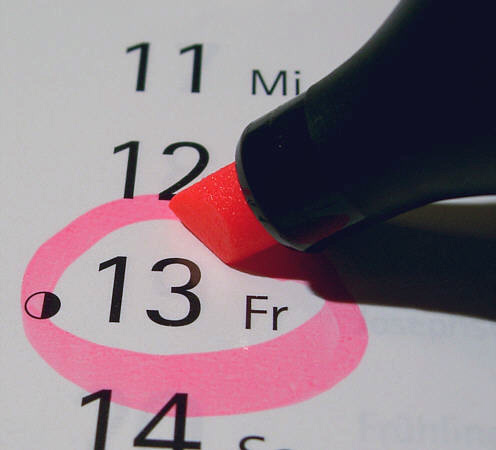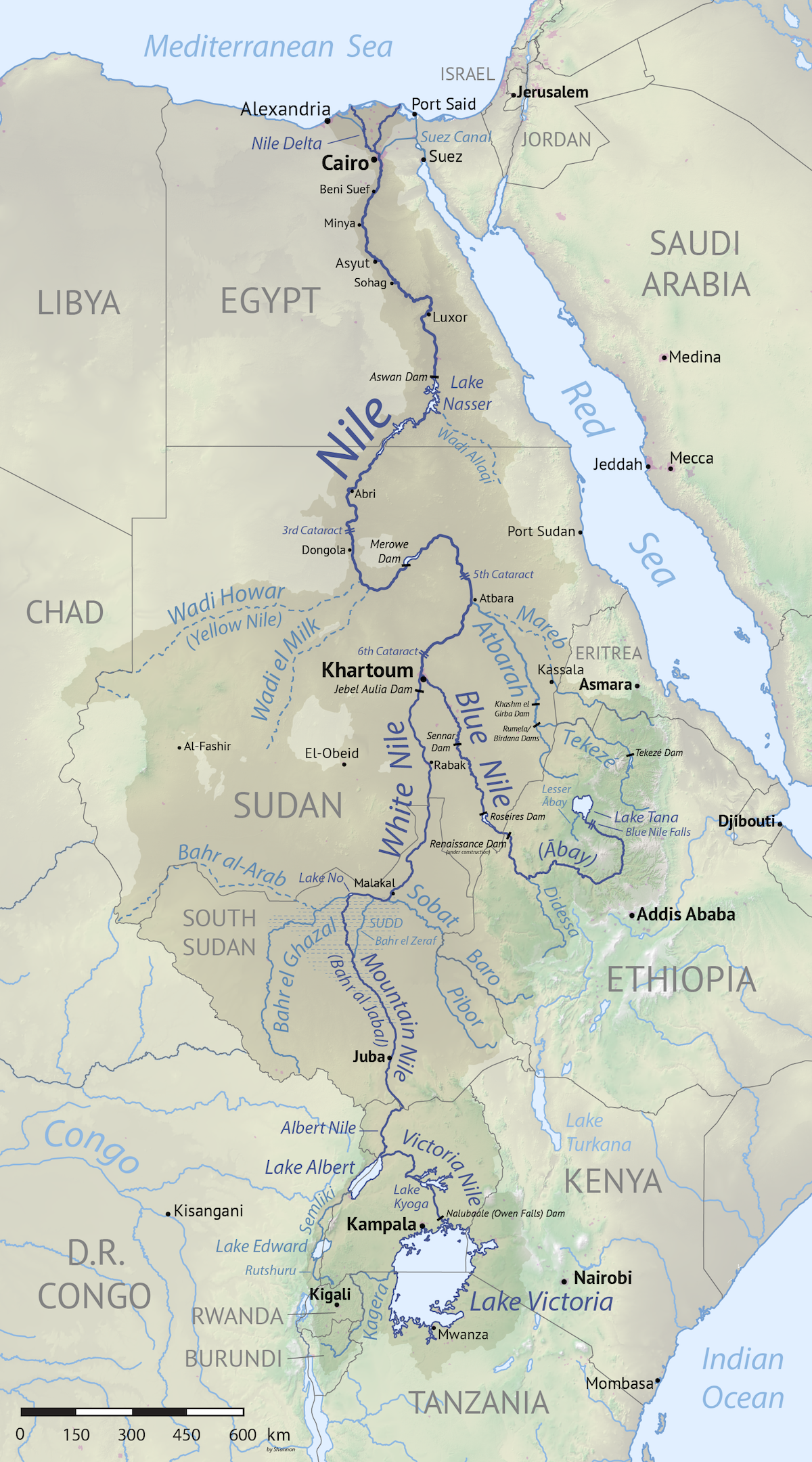|
Solar Cycle (calendar)
The solar cycle is a 28-year cycle of the Julian calendar, and 400-year cycle of the Gregorian calendar with respect to the week. It occurs because leap years occur every 4 years, typically observed by adding a day to the month of February, making it February 29th. There are 7 possible days to start a leap year, making a 28-year sequence. This cycle also occurs in the Gregorian calendar, but it is interrupted by years that are divisible by 100 but not by 400, which these are common years. This interruption has the effect of skipping 16 years of the solar cycle between February 28 and March 1. Because the Gregorian cycle of 400 years has exactly 146,097 days, i.e. exactly 20,871 weeks, one can say that the Gregorian so-called solar cycle lasts 400 years. Calendar years are usually marked by Dominical letters indicating the first Sunday in a new year, thus the term solar cycle can also refer to a repeating sequence of Dominical letters. Unless a year is not a leap year due to Greg ... [...More Info...] [...Related Items...] OR: [Wikipedia] [Google] [Baidu] |
Julian Calendar
The Julian calendar is a solar calendar of 365 days in every year with an additional leap day every fourth year (without exception). The Julian calendar is still used as a religious calendar in parts of the Eastern Orthodox Church and in parts of Oriental Orthodox Churches, Oriental Orthodoxy as well as by the Amazigh, Amazigh people (also known as the Berbers). The Julian calendar was proposed in 46 BC by (and takes its name from) Julius Caesar, as a reform of the earlier Roman calendar, which was largely a lunisolar calendar, lunisolar one. It took effect on , by his edict. Caesar's calendar became the predominant calendar in the Roman Empire and subsequently most of the Western world for more than 1,600 years, until 1582 when Pope Gregory XIII promulgated a revised calendar. Ancient Romans typically designated years by the names of ruling consuls; the ''Anno Domini'' system of numbering years was not devised until 525, and became widespread in Europe in the eighth cent ... [...More Info...] [...Related Items...] OR: [Wikipedia] [Google] [Baidu] |
Ancient Egypt
Ancient Egypt () was a cradle of civilization concentrated along the lower reaches of the Nile River in Northeast Africa. It emerged from prehistoric Egypt around 3150BC (according to conventional Egyptian chronology), when Upper and Lower Egypt were amalgamated by Menes, who is believed by the majority of List of Egyptologists, Egyptologists to have been the same person as Narmer. The history of ancient Egypt unfolded as a series of stable kingdoms interspersed by the "Periodization of ancient Egypt, Intermediate Periods" of relative instability. These stable kingdoms existed in one of three periods: the Old Kingdom of Egypt, Old Kingdom of the Early Bronze Age; the Middle Kingdom of Egypt, Middle Kingdom of the Middle Bronze Age; or the New Kingdom of Egypt, New Kingdom of the Late Bronze Age. The pinnacle of ancient Egyptian power was achieved during the New Kingdom, which extended its rule to much of Nubia and a considerable portion of the Levant. After this period, Egypt ... [...More Info...] [...Related Items...] OR: [Wikipedia] [Google] [Baidu] |
Lunar Calendar
A lunar calendar is a calendar based on the monthly cycles of the Moon's phases ( synodic months, lunations), in contrast to solar calendars, whose annual cycles are based on the solar year, and lunisolar calendars, whose lunar months are brought into alignment with the solar year through some process of intercalationsuch as by insertion of a leap month. The most widely observed lunar calendar is the Islamic calendar. The details of when months begin vary from calendar to calendar, with some using new, full, or crescent moons and others employing detailed calculations. Since each lunation is approximately days, (which gives a mean synodic month as 29.53059 days or 29 days 12 hours 44 minutes and 3 seconds) it is common for the months of a lunar calendar to alternate between 29 and 30 days. Since the period of 12 such lunations, a lunar year, is 354 days, 8 hours, 48 minutes, 34 seconds (354.36707 days), lunar calendars are 11 to 12 day ... [...More Info...] [...Related Items...] OR: [Wikipedia] [Google] [Baidu] |
Friday The 13th
Friday the 13th is considered an unlucky day in Western superstition. It occurs when the 13th day of the month in the Gregorian calendar falls on a Friday, which happens at least once every year but can occur up to three times in the same year. Common years that begin on Thursday have three Friday the 13ths in February, March, and November, such as 2009, 2015, and 2026. Leap years that begin on Sunday (i.e. that follow Dominical Letter AG) such as 2012 and 2040, also have three Friday the 13ths in January, April, and July. The years 2001, 2002, 2004, 2006, 2007, 2013, 2017, 2018, 2019, 2020, 2023 and 2024 had two Friday the 13ths, as will 2029; 2003, 2005, 2008, 2010, 2011, 2014, 2016, 2021, 2022 and 2025 had only one Friday the 13th, as will 2027 and 2028. For a month to have a Friday the 13th, the first day of the month must begin on a Sunday. History Unluckiness of 13 One source mentioned for the unlucky reputation of the number 13 is a Norse myth about twelve gods ... [...More Info...] [...Related Items...] OR: [Wikipedia] [Google] [Baidu] |
Doomsday Rule
The Doomsday rule, Doomsday algorithm or Doomsday method is an algorithm of determination of the day of the week for a given date. It provides a perpetual calendar because the Gregorian calendar moves in cycles of 400 years. The algorithm for mental calculation was devised by John Conway in 1973, drawing inspiration from Lewis Carroll's perpetual calendar algorithm. It takes advantage of each year having a certain day of the week upon which certain easy-to-remember dates, called the ''doomsdays'', fall; for example, the last day of February, April 4 (4/4), June 6 (6/6), August 8 (8/8), October 10 (10/10), and December 12 (12/12) all occur on the same day of the week in the year. Applying the Doomsday algorithm involves three steps: determination of the anchor day for the century, calculation of the anchor day for the year from the one for the century, and selection of the closest date out of those that always fall on the doomsday, e.g., 4/4 and 6/6, and count of the number of ... [...More Info...] [...Related Items...] OR: [Wikipedia] [Google] [Baidu] |
Birkat Hachama
''Birkat Hachama'' (, "Blessing of the Sun") refers to a rare Jewish blessing that is recited to the Creator, thanking God for creating the sun. The blessing is recited when the Sun completes its cycle every 28 years on a Tuesday at sundown. Jewish tradition says that when the Sun completes this cycle, it has returned to its position when the world was created. Because the blessing needs to be said when the Sun is visible, the blessing is postponed to the following day, on Wednesday morning. According to Judaism, the Sun has a 28-year solar cycle known as ''machzor gadol'' (, "the great cycle"). A solar year is estimated as 365.25 days and the "Blessing of the Sun", being said at the beginning of this cycle, is thus recited every 10,227 (28 times 365.25) days. The last time that it was recited was on April 8, 2009 (14 ''Nisan'' 5769 on the Hebrew calendar.) From an astronomical point of view, there is nothing special to these dates; e.g. the Sun, Moon, planets and stars will not ... [...More Info...] [...Related Items...] OR: [Wikipedia] [Google] [Baidu] |
Nile
The Nile (also known as the Nile River or River Nile) is a major north-flowing river in northeastern Africa. It flows into the Mediterranean Sea. The Nile is the longest river in Africa. It has historically been considered the List of river systems by length, longest river in the world, though this has been contested by research suggesting that the Amazon River is slightly longer.Amazon Longer Than Nile River, Scientists Say Of the world's major rivers, the Nile has one of the lowest average annual flow rates. About long, its drainage basin covers eleven countries: the Democratic Republic of the Congo, Tanzania, Burundi, Rwanda, Uganda, Kenya, Ethiopia, Eritrea, South Sudan, Sudan, and Egypt. In pa ... [...More Info...] [...Related Items...] OR: [Wikipedia] [Google] [Baidu] |
Sirius
Sirius is the brightest star in the night sky. Its name is derived from the Greek word (Latin script: ), meaning 'glowing' or 'scorching'. The star is designated Canis Majoris, Latinized to Alpha Canis Majoris, and abbreviated CMa or Alpha CMa. With a visual apparent magnitude of −1.46, Sirius is almost twice as bright as Canopus, the next brightest star. Sirius is a binary star consisting of a main-sequence star of spectral type A0 or A1, termed Sirius A, and a faint white dwarf companion of spectral type DA2, termed Sirius B. The distance between the two varies between 8.2 and 31.5 astronomical units as they orbit every 50 years. Sirius appears bright because of its intrinsic luminosity and its proximity to the Solar System. At a distance of , the Sirius system is one of Earth's nearest neighbours. Sirius is gradually moving closer to the Solar System and it is expected to increase in brightness slightly over t ... [...More Info...] [...Related Items...] OR: [Wikipedia] [Google] [Baidu] |
Sunday
Sunday (Latin: ''dies solis'' meaning "day of the sun") is the day of the week between Saturday and Monday. Sunday is a Christian sabbath, day of rest in most Western countries and a part of the Workweek and weekend, weekend. In some Middle East, Middle Eastern countries, Sunday is a weekday. For most Christians, Sunday is observed as a day of worship and rest, holding it as the Lord's Day and the day of Christ's resurrection; in the United States, Canada, Japan, as well as in parts of South America, Sunday is the first day of the week. According to the Islamic calendar, Hebrew calendar and traditional calendars (including Christian calendars) Sunday is the first day of the week; Quaker Christians call Sunday the "first day" in accordance with their testimony of simplicity. The International Organization for Standardization ISO 8601, which is based in Switzerland, calls Sunday the seventh day of the week."Monday shall be identified as calendar day [1] of any calendar week, and ... [...More Info...] [...Related Items...] OR: [Wikipedia] [Google] [Baidu] |
Gregorian Calendar
The Gregorian calendar is the calendar used in most parts of the world. It went into effect in October 1582 following the papal bull issued by Pope Gregory XIII, which introduced it as a modification of, and replacement for, the Julian calendar. The principal change was to space leap years slightly differently to make the average calendar year 365.2425 days long rather than the Julian calendar's 365.25 days, thus more closely approximating the 365.2422-day tropical year, "tropical" or "solar" year that is determined by the Earth's revolution around the Sun. The rule for leap years is that every year divisible by four is a leap year, except for years that are divisible by 100, except in turn for years also divisible by 400. For example 1800 and 1900 were not leap years, but 2000 was. There were two reasons to establish the Gregorian calendar. First, the Julian calendar was based on the estimate that the average solar year is exactly 365.25 days long, an overestimate of a li ... [...More Info...] [...Related Items...] OR: [Wikipedia] [Google] [Baidu] |
Dominical Letter
Dominical letters or Sunday letters are a method used to determine the day of the week for particular dates. When using this method, each year is assigned a letter (or pair of letters for leap years) depending on which day of the week the year starts with. The Dominical letter for the current year 2025 is E. Dominical letters are derived from the Roman practice of marking the repeating sequence of eight letters A–H (commencing with A on January 1) on stone calendars to indicate each day's position in the eight-day market week ('' nundinae''). The word is derived from the number nine due to their practice of inclusive counting. After the introduction of Christianity a similar sequence of seven letters A–G was added alongside, again commencing with January 1. The dominical letter marks the Sundays. Nowadays they are used primarily as part of the computus, which is the method of calculating the date of Easter. A common year is assigned a single dominical letter, indicating which ... [...More Info...] [...Related Items...] OR: [Wikipedia] [Google] [Baidu] |
Common Years
Common may refer to: As an Irish surname, it is anglicised from Irish Gaelic surname Ó Comáin. Places * Common, a townland in County Tyrone, Northern Ireland * Boston Common, a central public park in Boston, Massachusetts * Cambridge Common, common land area in Cambridge, Massachusetts * Clapham Common, originally common land, now a park in London, UK * Common Moss, a townland in County Tyrone, Northern Ireland * Lexington Common, a common land area in Lexington, Massachusetts * Salem Common Historic District, a common land area in Salem, Massachusetts People * Common (rapper) (born 1972), American hip hop artist, actor, and poet * Andrew Ainslie Common (1841–1903), English amateur astronomer * Andrew Common (1889–1953), British shipping director * John Common, American songwriter, musician and singer * Thomas Common (1850–1919), Scottish translator and literary critic Arts, entertainment, and media * ''Common'' (film), a 2014 BBC One film, written by Jimmy McGo ... [...More Info...] [...Related Items...] OR: [Wikipedia] [Google] [Baidu] |







